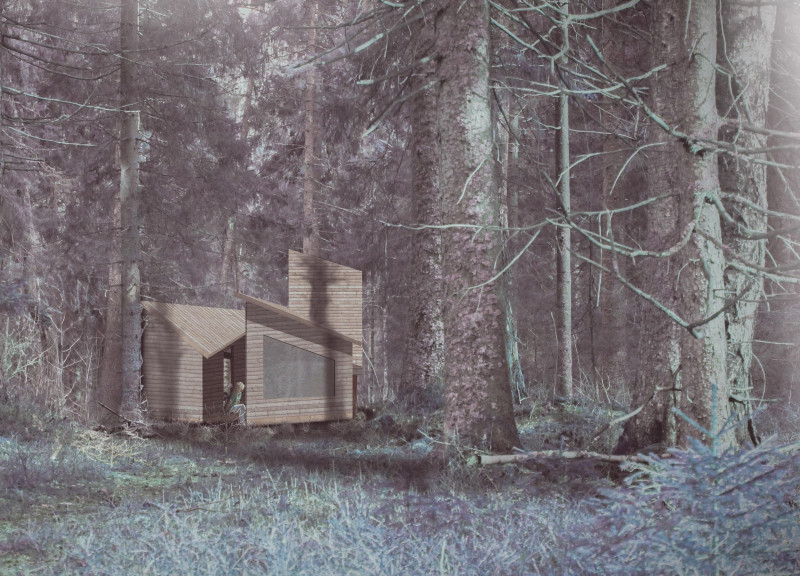5 key facts about this project
The design presents a new approach to creating a cabin focused on enhancing meditation practices. Located in a natural setting, the cabin goes beyond the traditional concept of a single shelter by including three distinct rooms. Each room serves a different purpose for meditation, allowing users to engage in various experiences influenced by their surroundings. This design highlights the importance of variability, encouraging a deeper connection to the environment.
Spatial Configuration
The layout features interconnected spaces that invite movement and interaction. Users travel between the rooms through outdoor pathways, fostering a strong relationship with nature. This movement encourages an awareness of changing elements such as sunlight and wind, enhancing the meditation experience. Each room is designed to offer specific qualities, creating unique atmospheres that cater to different meditative practices.
Buffer Zones
A notable aspect of the design is the inclusion of buffer zones, which act as transitional spaces between the individual rooms. These areas offer semi-private opportunities for interaction and movement. By integrating these buffer zones, the design creates an inviting environment for meditation. It blends indoor and outdoor experiences, making the cabin feel more open to its surroundings.
Material Utilization
Wood is the primary material used throughout the cabin. A straightforward wood joint construction technique is employed, which supports efficient building methods. The choice of wood helps the cabin remain connected to its natural environment, reinforcing the overall theme of simplicity and functionality. This approach allows for easier construction and potential relocation if desired.
Natural Interaction
The overall design focuses on the cabin's role as a site for reflection and meditation. It is responsive to environmental conditions, allowing users to experience the nuances of nature throughout the seasons. By emphasizing the relationship between space and sensory experiences, the cabin creates a tranquil environment ideal for meditation. The natural elements are carefully woven into the structure, making them essential to the experience of the cabin.






















































